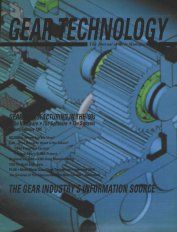You're already a veteran of the computer revolution. Only you and your controller know how much money you've spent and only your spouse knows how many sleepless nights you've had in the last ten years trying to carve out a place in the brave new world of computerized gear manufacturing. PC's, CNCs, CAD, CAM, DNC, SPC, CMM: You've got a whole bowl of alphabet soup out there on the shop floor. Overall these machines have lived up to their promises. Production time is down, quality is up. You have fewer scrapped parts and better, more efficient machine usage.
